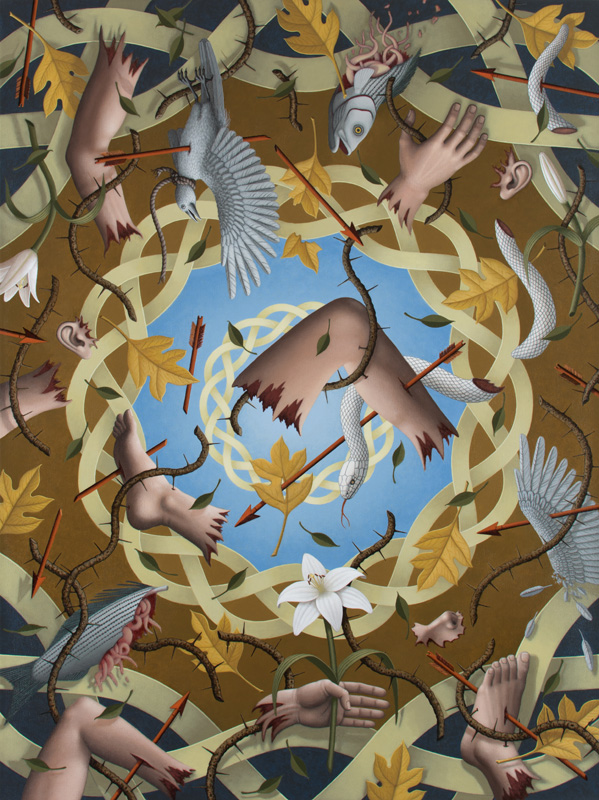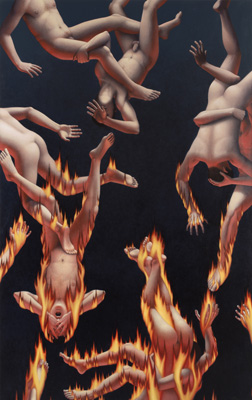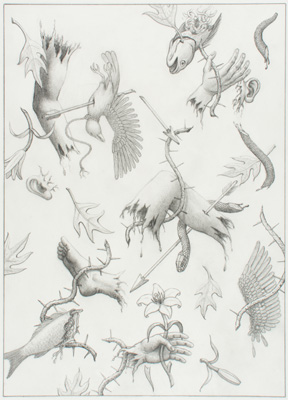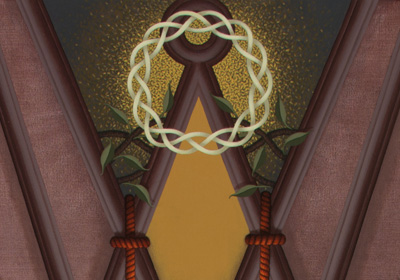
 |
| Endless Fragmentation 2016, acrylic on canvas 48 x 36 in. |
Endless Fragmentation |
Endless Fragmentation began as a way to revisit the theme of falling that I first explored in the 2004 painting, The Fall, or the Time it Takes Falling Bodies to Light. The new painting closely follows that initial intent while also differing from it by depicting a greater variety of elements which are not only falling but are also fragmented or broken into parts. The preliminary sketch for the piece shows how this intention took form. |
 2004, acrylic on canvas, 78 x 48 in. |
 2016, graphite on paper, 11 3/8 x 8 1/8 in. |
After completing the sketch I turned to developing the image on canvas. During that process I soon became dissatisfied with the lack of dynamics in the space in which the elements reside. While studying the piece I recognized a circular movement in the falling parts and thought it would be interesting to introduce a circular element to accentuate that movement. Concurrently I was finishing Morning Star, a painting in which I first used a circular endless knot. Thinking the endless knot may work as the circular element in the new painting I incorporated it both to solve the current problem and to further explore the form. |
 2016, acrylic on canvas, 66 x 48 in. |
 |
|
Conceptually and compositionally the circular endless knot turned out to be perfect. It reinforced the general notion of the endless cycle of life, while also referencing, as in Morning Star, a stylized crown-of-thorns, and the oneness of the Holy Trinity. It worked so well that I introduced three of knots in diminishing scale, thereby giving the piece greater spatial depth and spatial variety. It is important to note that the elements included in Endless Fragmentation often make symbolic reference to basic timeless forms representing air, water, fire, earth, nature, and the human body. As such the bird references air, the fish - water, the snake - earth, the flowers - beauty, and the leaves and vines – nature. The placement and organization of elements also have significance in that much of the composition is built on the triangle and groupings of three. For example, each endless knot has three intertwining ribbons (forming one continuous ribbon) that create triangular negative spaces within the weave of the ribbons. In addition the placement of the three lilies is triangular, as are the pedals of the fully blooming lily. And the relative placement of the two severed ears and nose also form a triangle as do the bird and fish elements. Even the snake is divided into three sections. All this and more can be seen in Endless Fragmentation. It is a dense picture, which at times may seem chaotic, but the endless knots and triangular compositional elements help bring stability and organization to the whole. - Brian Mains, March 2018 |